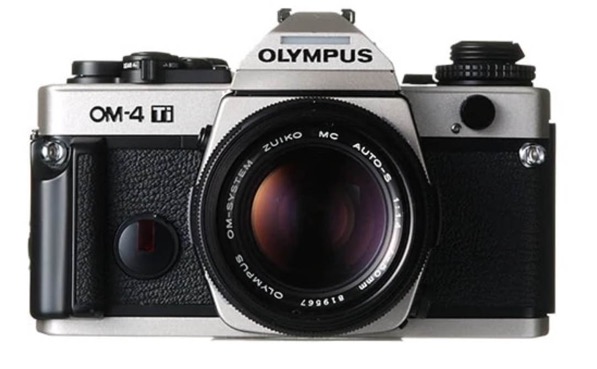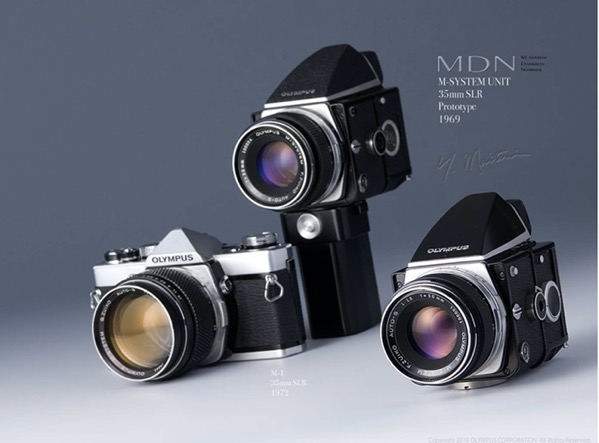
- © 2005-2020 Erwin Puts Contact Me 0

De argumenten, die aantonen dat Olympus zijn camera divisie (netjes genoemd als imaging division) moet gaan verkopen, zijn een beetje vreemd. Afsplitsing leidt tot nieuwe impulsen, heet het. Hete chte argument is natuurlijk geld: de imaging divisie leidt al drei jaar verlies en een andere investeerder stopt er wellicht meer geld in dan de Olympus bazen willen. Na het succes met de halfkleinbeeld Pen camera reeks, heeft Olympus steeds de boot gemist. Ten onrechte! De poging om met de OM spiegelreflex serie de beste handzame camera te maken, liep uit op een fiasco. Maitani, de hoofdontwerper wilde de eigenschappen van de meetzoeker camera, de Leica M, vertalen naar het veelzijdige spiegelreflex concept. De fabriek die er speciaal voor gebouwd werd, kon een productie van 60.000 eenheden per maand aan, toendertijd een normale hoeveelheid voor de grotere fabrikanten, waartoe ook Olympus zich (nog) rekende. Het werden er enkele honderden per maand. Dat de camera dertig jaar in productie is gebleven, kan toegerekend worden aan de schare liefhebbers, die er nog steeds is. De OM serie is een afgeleide van de Pen F, maar zou een heel ander ontwerp krijgen, meer een Hasseblad dan een SLR.
De optiek was compact, net als bij de Leica M, en bijna net zo goed. Toch geloofde niemand dat een zo kleine camera goed zou kunnen presteren. Met de digitale omslag probeerde Olympus nog eens het concept van de compacte camera toe te passen, maar nu met de digitale techniek. De Olympus E-1 en het Four-Thirds formaat waren geboren. Ook dat was geen succes en de OM-D serie heeft problemen om het op te nemen tegen de gevestigde namen. Toch is er een zekere elegantie in ontwerp en functies te zien in de OM-D serie en zeker de Pen-F serie.
Het zou jammer zijn als de Olympus cameras gaan verdwijnen, maar dat gold ook voor de Leica cameras


Leica
Leica is aan een wedergeboorte bezig, dank zij de geldstroom die de eigenaar, miljardair Kaufmann, er naar teo heeft geleid. Uit eigenbelang en niet omdat het merk zo interessant is.
Van de vele initiatieven (brillen, horloges, cinematografie, samenwerking met Huawei (daar heb je Pompeo weer!)) hoor je nog weinig. De royalties van Huawei houden het bedrijf overeind, volgens de laatste financiële gegevens, die echt ondoorzichtig zijn. Ook Leica ontkomt niet aan de pixel race, die de gehele fotowereld in zijn greep houdt. Veertig megapixels zijn wel het nieuwe minimum, lijkt het. De aangekondigde M10-R(esolution) zou de vaandeldrager van de M lijn moeten worden, naast de SL2. Wie kent nog de S-camera, die weer terug naar zijn oorspronkelijke taak lijkt te gaan: als technologie platfrom waarop de andere modellen kunne teren.
Canon
Canon timmert aardig aan de weg, sinds de spiegelloze toekomst wenkt. De strategie van Canon is helder, uitsluitend naar de toekomst gericht. Die van Leica is tweeledig: toekomstgericht en nostalgisch. De Canon R-modellen zijn heel slim bedacht:met een behoudend uiterlijk dat de kopers en gebruikers aanspreekt en met voldoende functies om zelfs de meest veeleisende consument tevreden te stellen
ISO waarden
Alle moderne digitale cameras pronken met gigantische ISO waarden. Dat is net zo fake als de wereld van Trump. De IS-norm was ooit bedacht om fabrikanten van film emulsies en belichtingsmeters een houvast te geven. Er werden strenge eisen aan gesteld, de beruchte zwartingsgraad van D = 0,10 aan de voet van de curve, is er een van. Sinds de matrix belichting is de ISO waarde slechts een aanknopingspunt, dat met de digitale techniek nog verder is verwijderd van een norm. De sensor produceert na een aantal omzwervingen door de software en hardware alleen nog getallen, die simpelweg gemanipuleerd kunnen worden en dus ook vermenigvuldigd. Als een tint een waarde heeft van x, dan is het niet moeilijk om daar de waarde 10x van te maken. Dan heb je een tien maal hogere gevoeligheid dan de basis waarde van de sensor. Je kan dit natuurlijk herhalen en dan krijg je waardes als ISO 51200 of nog hoger. Maar dat heeft niets te maken met de gevoeligheid van de sensor en de gradatie krommes, die er van afgeleid worden.
English translation
Olympus
The arguments, which show that Olympus has to sell its camera division (neatly called imaging division), are a bit strange. Splitting off leads to new impulses, it's called. The hottest argument, of course, is money: the imaging division has been making losses for three years and another investor might put in more money than the Olympus bosses want. After the success with the half-sized Pen camera series, Olympus has always missed the boat. Wrongly! The attempt to make the OM SLR series the best handheld camera ended in a fiasco. Maitani, the chief designer wanted to translate the characteristics of the finder camera, the Leica M, into the versatile SLR concept. The factory that was specially built for it could handle a production of 60,000 units per month, at the time a normal quantity for the larger manufacturers, which Olympus (still) counted on. It turned out to be a few hundred per month. The fact that the camera remained in production for thirty years, can be attributed to the multitude of enthusiasts, who are still there. The OM series is a derivative of the Pen F, but would have a completely different design, more a Hasseblad than an SLR.
The optics were compact, just like the Leica M, and almost as good. Yet no one believed that such a small camera could perform well. With the digital cover, Olympus once again tried to apply the concept of the compact camera, but this time with digital technology. The Olympus E-1 and the Four-Thirds format were born. That wasn't a success either, and the OM-D series has problems taking on the established names. Still, a certain elegance in design and functions can be seen in the OM-D series and certainly the Pen-F series.
It would be a pity if the Olympus cameras were to disappear, but so were the Leica cameras.
Leica
Leica is in the process of rebirth, thanks to the flow of money that the owner, billionaire Kaufmann, has led to teo. Out of self-interest and not because the brand is so interesting.
Of the many initiatives (glasses, watches, cinematography, cooperation with Huawei (there's Pompeo again!)) you don't hear much yet. Huawei's royalties keep the company afloat, according to the latest financial data, which are really opaque. Leica can't escape the pixel race either, which holds the entire photo world in its grip. Forty megapixels are the new minimum, it seems. The announced M10-R(esolution) should become the standard-bearer of the M line, next to the SL2. Who remembers the S-camera, which seems to go back to its original task: as a technology flatfrom which the other models can use.
Canon
Canon has been working hard since the mirrorless future beckoned. Canon's strategy is clear, forward-looking only. Leica's strategy is twofold: forward-looking and nostalgic. Canon R models have been cleverly conceived: with a retaining look that appeals to buyers and users, and with enough features to satisfy even the most demanding consumer.
ISO values
All modern digital cameras show off gigantic ISO values. That's as fake as the world of Trump. The IS standard was once invented to give manufacturers of film emulsions and exposure meters a foothold. There were strict requirements, the infamous density of D = 0.10 at the base of the curve is one of them. Since the matrix exposure, the ISO value is only a starting point, which with digital technology is even further away from a standard. After some wandering through the software and hardware, the sensor only produces numbers, which can simply be manipulated and thus multiplied. If a hue has a value of x, then it is not difficult to make the value 10x. Then you have a ten times higher sensitivity than the base value of the sensor. Of course you can repeat this and then you get values like ISO 51200 or even higher. But that has nothing to do with the sensitivity of the sensor and the gradation curves that are derived from it. Translated with www.DeepL.com/Translator (free version)